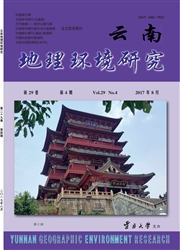

 中文摘要:
中文摘要:
采用空间自相关和Tobit等方法,以县域为研究单元,探讨了2002—2014年江苏省工业碳排放强度差异的时空格局演化特征及影响因素。结果表明:江苏省工业碳排放强度总体差异呈缩小趋势,苏南、苏中和苏北3地区差异程度低,各区域内部差异是江苏省工业碳排放强度整体差异的主因;H—H型县域集中分布于苏中、苏北地区,L—L型县域分布于苏南地区。经济水平、能源利用率、产业结构、政府调控、人口规模和技术创新是江苏省工业碳排放强度空间差异的主要影响因素,其中经济水平和人口规模对工业碳排放强度表现为正向驱动作用,而能源利用率、产业结构和政府调控的驱动作用则相反。
 英文摘要:
英文摘要:
Taking the county as the research unit, this paper explores the spatio - temporal pattern features, evolution trend and influencing factors of industrial carbon emission intensity using the methods of spatial autocorrelation analysis and Tobit method. The results showed that the overall differences of industrial carbon emission intensity presented a decreasing trend, the difference degree of South Jiangsu, Middle Jiangsu and North Jiangsu were low, and the regional internal differences were the main reason for the overall difference of industrial carbon emission intensity in Jiangsu; H - H counties gathered in Middle Jiangsu and North Jiangsu, but L - L counties gathered in South Jiangsu. The main factors influencing the industrial carbon emission intensity were economic level, energy efficiency, industrial structure, government regulation, population size and technological innovation, among which the economic level and population size presented a promoting effect on the industrial carbon emission intensity, but energy efficiency, industrial structure and government regulation presented a opposite effect.
 同期刊论文项目
同期刊论文项目
 同项目期刊论文
同项目期刊论文
 期刊信息
期刊信息
